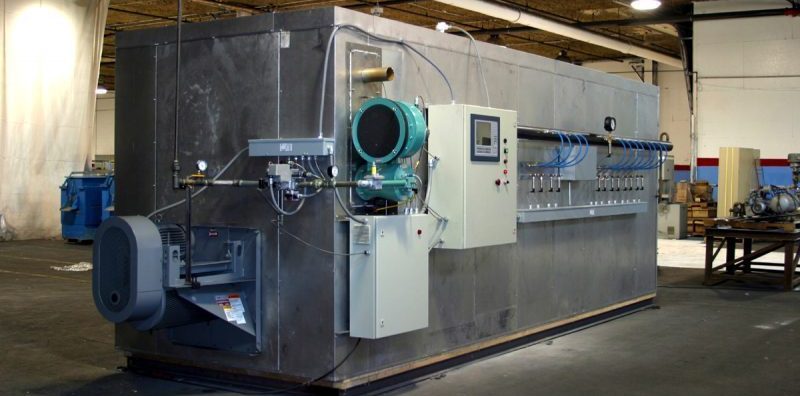Opinions are divided on the issue of gas versus electricity when it comes to domestic ovens. Many people favour gas because they find gas ovens easier to control. Funnily enough, gas industrial ovens are actually much harder to control especially in precision applications and the cost of gas is now at an all time high. As the uses for industrial ovens are much more varied than with domestic ovens, the considerations to take into account when choosing between gas and electricity are more complicated.
Cost
Electric heating is much more efficient. Even with modern burners there is a certain amount of wastage with gas supplied to the burner through pipes etc. With electric heating, you only use the amount required. Add to this the fact that electricity is much easier to control and it’s easy to see that electric industrial ovens can be more energy efficient than gas ones.
Typically, a gas oven is around 20 percent more expensive to buy than an electric one. One reason for this is as soon as you start dealing with fire, things get complicated. Firstly, the burner requires a combustion chamber which can either be above or external to the oven chamber and ducted into the working area, or through a tube direct into the oven duct, therefore increasing the duct size along with the oven size. Additionally, gas ovens have the biproducts of water and carbon dioxide which require space and facilities to deal with.
As electric ovens are relatively simple, they can be built to any size or specification you require so do not need any costly extra space.
Precision/Variation
If tight uniformity is required, oven manufacturers recommend an electric oven because controlling gas burners is much more difficult. Using easy to control precision switches like thyristors and PID controllers mean electric ovens can be used where very specific temperatures need to be maintained. The versatility of an electric oven also means they can be used for applications such as conveyor ovens where an item needs to be passed through areas where it can be heated, cooled and reheated in sequence.
Safety
Aside from the usual risks associated with combining gas and fire, by law a gas oven requires an explosion relief panel as well as a fresh air inlet and a volatile outlet to allow the spent combustibles to escape to the atmosphere. This means using an electric oven creates fewer emissions which means less risk to staff and less damage to the environment. Putting the correct safety features in place to keep the operation and staff safe from the dangers of using gas can be expensive so this is an additional cost that needs to be weighed up when looking at gas as a cheaper option.
Therefore, there are a number of factors that need to be taken into consideration that push the cost of using a gas oven up. Additionally, for certain applications, the controllability of electric ovens is essential and the safety concerns around using gas could make things difficult. CD Automation offer a number of different precision controllers to make using electric ovens even more efficient and easier to achieve the exact temperatures you require.





